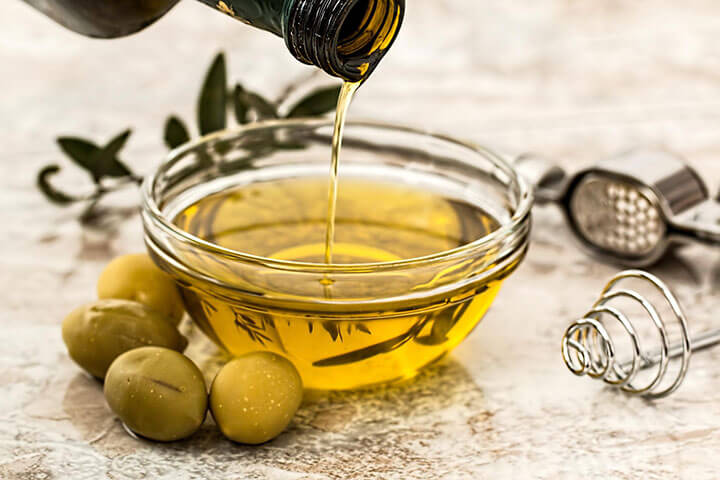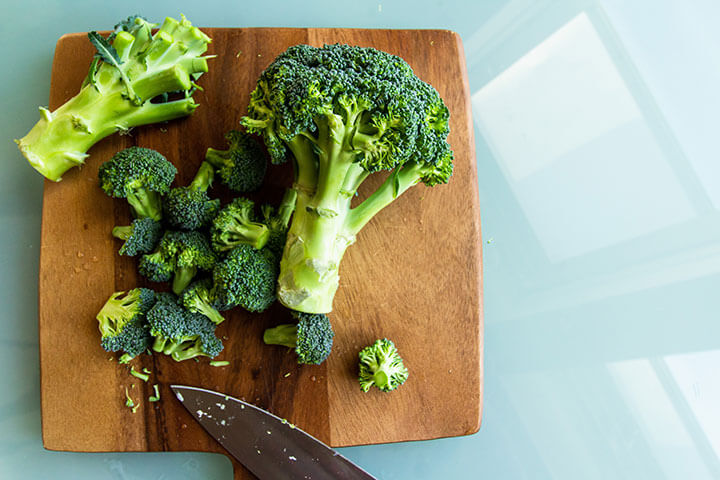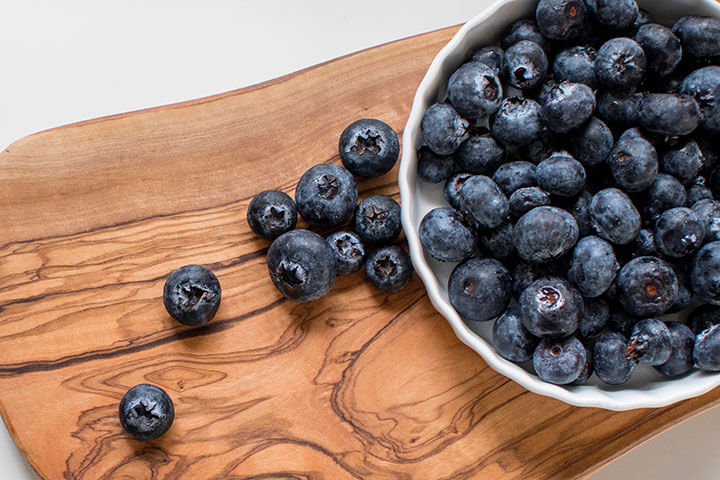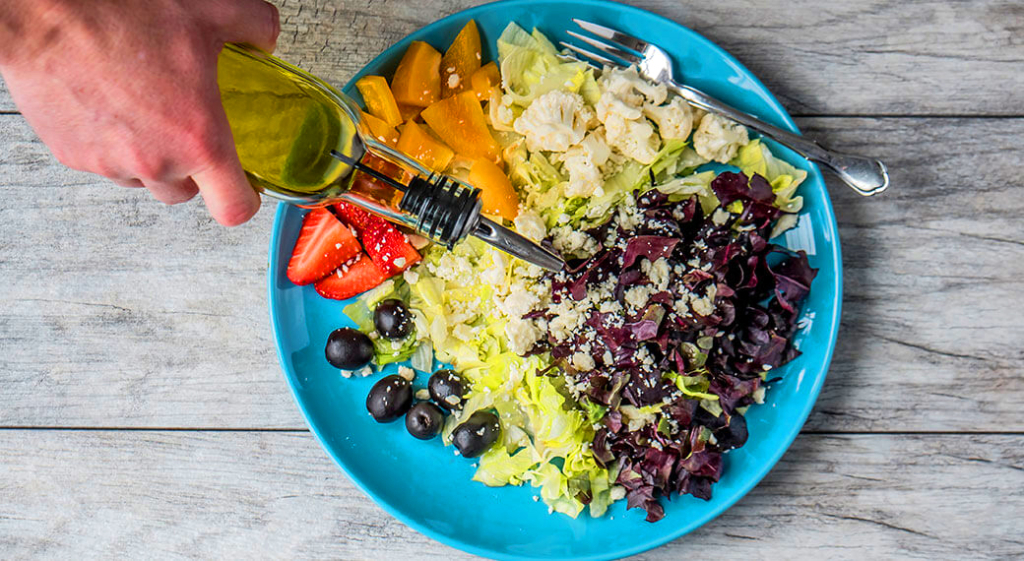Welcome to part two of a two-part series about superfood. Please click here for part one.
Consumers are rethinking their relationship with food now more than ever. Whether it is seeking out better-for-you options or prioritizing food as preventative medicine, this trend continues to grow and evolve into a lifestyle.
In part one of our superfood series, we touched upon how immunity-boosting foods work to build a healthier body, including their relationship to chronic inflammation and oxidative stress. Additionally, our article featured the health benefits of turmeric, tomatoes, and goji berry.
In part two, we cover the benefits of olive oil, cruciferous vegetables, and blueberries. As always, please keep in mind that variety is the spice of life. While some ingredients offer more benefits than others, there are no shortcuts to health. However, healthy dietary practices and clean eating yield incredible results. Your customers on this path will appreciate having healthy options on the menu.
Olive Oil

Olive oil is a healthy unsaturated fat extracted from the fleshy part of olives. Production of this superfood is most often found in Mediterranean countries like Italy, Greece, or Spain. However, varieties out of California, South America, and Australia are also available.
Olive oil has been used medicinally for thousands of years in the Mediterranean and is a key ingredient in today’s celebrated Mediterranean diet. Notable figures such as Hippocrates, Galen, and Homer each deemed it a special commodity, earning distinctive titles such as “liquid gold” and “the great healer.” But what makes olive oil so special that people have sung its praises since ancient times?
Why Is Olive Oil a Superfood?
A recent study examining 92,000 people over the span of 30 years concluded that replacing butter, mayonnaise, and margarine with olive oil helped people live significantly longer, healthier lives.
Specifically, benefits of olive oil consumption due to polyphenols, antioxidants, and nutrients include:
- Reducing the risk of stroke and heart disease
- Lowering blood pressure
- Boosting the levels of good cholesterol (HDL)
- Lowering the levels of bad cholesterol (LDL)
- Combating low-level inflammation through the antioxidant oleocanthal
- Reducing levels of the inflammatory marker C-Reactive Protein (CRP)
- Reducing the incidence of stomach ulcers by protecting the body against the pathogen H. pylori
- Preventing or lowering oxidative damage in the body, a driver of cancer
Which Kind of Olive Oil Packs the Most Nutrients?
Extra-virgin olive oil packs the most nutrients. This designation means there is no heat or chemicals involved during production. Additionally, all extra-virgin olive oil is produced from the first cold pressing. Because it is mechanically pressed without the use of heat, extra-virgin olive oil retains phenols. The heat used to produce lower-grade varieties effectively destroys these important health boosters.
Extra-virgin olive oil is used for taste and cooking, as it can handle temperatures up to 420 degrees Fahrenheit.
Olive Oil Menu Inspiration
Liquid gold knows no bounds and has increasingly been making its way onto the dessert menu.
- Mango-Olive Oil Sorbet
- Fennel, Avocado, and Satsuma Salad
- Herbed Extra-Virgin Olive Oil
- Sourdough Gnocchetti Sardi With Basil Pesto
- Kibbeh
Cruciferous Vegetables

We’ve all heard the phrase “eat your vegetables.” There is even a day dedicated to the phrase. Despite the bitter flavor of cruciferous vegetables, this common wisdom has firm ground to stand on. To maintain a healthy body, there is simply no substitute for eating your vegetables.
There are around 3000 species of cruciferous plants. For our purposes in this article, we can narrow it down to the following common produce selection carried by suppliers:
Arugula – Bok Choy – Broccoli – Brussels Sprouts – Cabbage – Cauliflower – Collard Greens – Kale – Radishes – Turnips – Watercress
Cruciferous vegetables contain a wide range of vitamins, minerals, fiber, and glucosinolates. Aside from giving these plants their bitter flavor, glucosinolates have piqued the scientific community’s interest and are widely researched for their medicinal properties. When prepared, chewed, and digested, glucosinolates form biologically active compounds. Isothiocyanates, for example, have cancer-fighting properties.
Why Are Cruciferous Vegetables a Superfood?
Sulforaphane, found nearly exclusively in cruciferous vegetables, is one of the key factors in what makes these bitter greens so good for human health. Incorporating daily servings of cruciferous vegetables has a wide range of well-known health benefits including the following highlights:
- Decreases risk of cancer
- Suppresses tumors, especially broccoli and sprouted broccoli seeds
- Reduces risk of colds and viruses
- Exhibits “chemoprotection,” by guarding against a host of chronic disease
- Guards against stomach ulcers
- Protects blood vessels from vascular damage
- Boosts liver detox enzymes
Mustard Seeds as a Bioavailability Hack
Increasing bioavailability in cruciferous plants is very easy. Research has found that adding mustard seed or mustard powder to prepared cruciferous vegetables does the trick. Mustard seeds contain myrosinase, the enzyme that facilitates an increased bioavailability of sulforaphane. Raw vegetables contain the most sulforaphane. However, adding mustard seed to cooked cruciferous plants helps to replenish the sulforaphane lost during the cooking process.
Cruciferous Vegetable Menu Inspiration
As every chef knows, there are countless options surrounding how to make these bitter vegetables taste incredible.
- Caramelized Broccoli With Garlic Sauce
- Butternut Squash and Kale Gratin
- Watercress Soup
- Cauliflower Buffalo Wings
- Roasted Cabbage With Warm Walnut-Rosemary Dressing
Blueberries

Even if blueberries earned their superfood status in large part from a marketing campaign, it doesn’t negate the fact that these juicy little berries are densely packed with vitamins, phytonutrients, flavonoids, and fiber.
Blueberries are native to North America and played a large role in Native American food culture, medicine, and art. Despite having been cultivated for mass consumption since 1916, they gained their superstar status in the 1990s after researchers took a deep dive into their health benefits and potential.
Although they are easily integrated into any meal due to their versatile flavor, blueberries are most commonly found in beverages, salads, dressing, sauce, and desserts. Their low calorie and low glycemic load make them enjoyable for a wide variety of people including those with type 2 diabetes. (But of course, always check with your doctor first.)
Why Are Blueberries a Superfood?
One reason blueberries are considered a superfood is the flavonoid anthocyanin, which is also responsible for their blue color. This antioxidant and other phytochemicals found in blueberries are largely responsible for a wide range of health benefits including:
- Destroying free radicals
- Curbing oxidative stress
- Improving cognitive function
- Lowering blood pressure
- Supporting blood vessel health
- Helping to manage blood sugar levels
- Improving blood and oxygen flow to the eyes
- Protecting against heart disease by reducing the oxidation of bad cholesterol (LDL)
- Encouraging autophagy or “cell clean-up”
Fresh or Frozen?
The common wisdom of “fresh is best” may not apply to blueberries. Data suggests that frozen blueberries offer even more antioxidants than the fresh variety. Blueberries are frozen immediately after being picked. Scientists have demonstrated that ice crystals formed during the freezing process are able to increase the antioxidant load of the fruit. When tested over time, the frozen berries maintained more antioxidants over fresh berries.
Of course, both varieties are healthy. However, having a frozen option reduces spoilage and waste, while still delivering powerful health benefits. Frozen blueberries are also a fantastic alternative to ice when added to smoothies.
Blueberry Menu Inspiration
From breakfast to a night cap, blueberries play many culinary roles.
- Savory Blueberry and Brie Grilled Cheese
- Violet Parfait With Blueberries, Rose, and Lemon Thyme Sorbet
- Blueberry Gin
- Savory Balsamic Blueberry Sauce
- Kohlrabi, Fennel, and Blueberry Salad
Helping Your Customers Achieve Their Health Goals
Adding immunity boosters and better-for-you options to your menu is easy with such a wide variety of accessible superfoods. The best part? Superfoods all tend to be rich in color which makes plating beautiful. Your guests will not only appreciate the health-conscious menu options; they’ll also love a mood boosting dish full of color.



